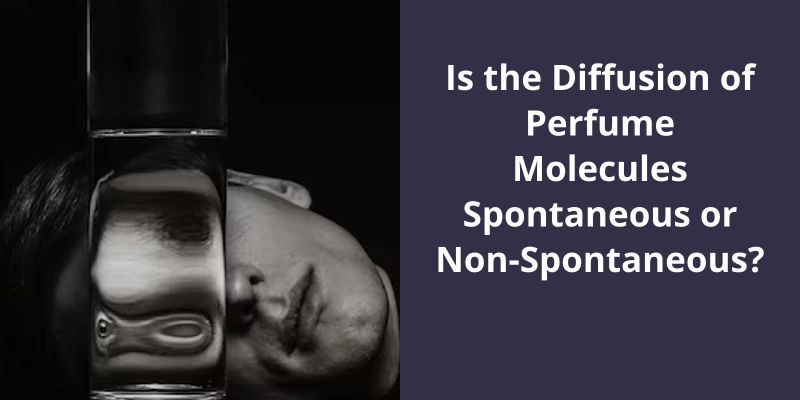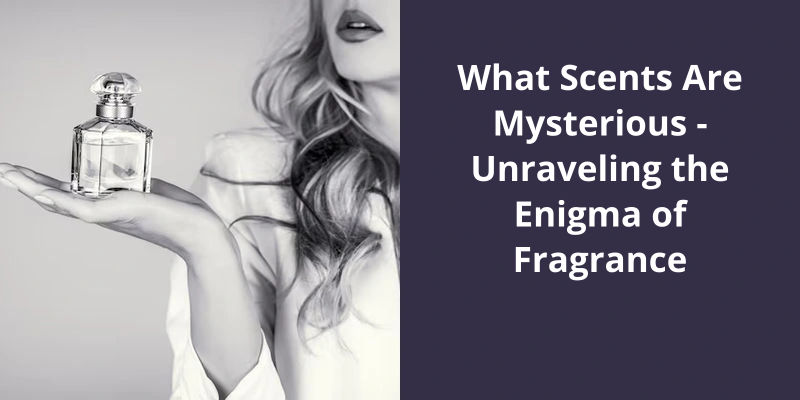The diffusion of perfume molecules is a spontaneous process. This means it occurs naturally, without an outside force or energy being applied. When you open a bottle of perfume, the molecules spread out from the bottle into the surrounding air, making the scent noticeable even from a distance. This process of moving from an area of high concentration (inside the bottle) to an area of low concentration (the room) follows the laws of thermodynamics, notably that systems tend to move toward a state of maximum disorder, or entropy. Therefore, the diffusion of perfume molecules is considered as a spontaneous action.

What Happens if You Open a Bottle of Perfume in One Corner of a Room?
Perfumes, or colognes, have been widely used since ancient times. These fragrances are composed of a mixture of various chemicals like alcohols, essential oils, and other aroma chemical compounds. Due to the nature of these compounds, perfumes are volatile and tend to evaporate easily into the atmosphere. This is why opening a bottle of perfume in one corner of a room can have a significant impact on the entire room.
Once the perfume bottle is uncapped, the fragrance molecules start diffusing in all directions. The perfume molecules travel from higher concentrations to lower concentrations and eventually spread out uniformly throughout the room. Thus, the stronger the perfume concentration, the faster and farther it will diffuse.
Depending on the size and ventilation of the room, the diffusion of the perfume molecules can take several minutes to several hours. In a well-ventilated room, the scent is likely to spread faster and cover a larger area than in a confined space.
Despite being pleasant and soothing to the senses, excessive use of perfumes can also cause health problems, especially in people with asthma or allergies. Ingestion or inhalation of the volatile chemicals used in perfumes can lead to headaches, dizziness, and respiratory irritation. Therefore, it’s essential to use perfumes judiciously and in well-ventilated areas.
The scent will spread out uniformly throughout the space, depending on factors such as the room size, ventilation, temperature, and humidity.
Understanding the movement of perfume molecules is crucial in grasping how fragrance is distributed within a given space. This is primarily because perfume molecules are in a constant state of motion, following a natural process of diffusion that enables them to spread throughout a room. The result – an intricate dance of perfume and air particles that creates a unique aroma that can vary from room to room. In the following sections, we will dive deeper into the intricacies of perfume diffusion and explore how it can be harnessed to elevate our sensory experience.
How Will You Describe the Movement of Perfume Molecules?
The process of diffusion can be described as the movement of molecules from an area of high concentration to an area of lower concentration. In the case of perfume, the molecules move from the point of application to the rest of the room as a result of this process. The fragrance spreads throughout the room, creating a pleasant aroma that can be enjoyed by anyone in the space.
Perfume molecules are made up of various chemical compounds with different properties. These compounds have varying molecular weights, which affects their ability to diffuse through the air. Lighter molecules diffuse more easily than heavier ones, which means that some fragrance components will spread more quickly than others.
The movement of perfume molecules isn’t a linear process. As the fragrant particles diffuse through the air, they bump into other molecules and change direction. This random movement is known as Brownian motion, and it contributes to the overall mixing of the fragrance throughout the room.
Higher temperatures increase the kinetic energy of the particles, which means they move more quickly and diffuse more rapidly. Humidity, or the amount of moisture in the air, can affect the attractiveness of the fragrance to the nose. When the air is humid, fragrance molecules tend to bind to water molecules rather than air molecules, which can make the perfume less noticeable.
Despite these complexities, the end result is a beautiful fragrance that can be enjoyed by all. Whether it’s wafting through a room at home or being worn as a personal scent, perfume is a testament to the power of scent and the intricacies of chemistry.
Now that we understand the basics of diffusion and examples of it in action, let’s explore a common question: is perfume osmosis or diffusion? This topic has sparked many debates, and we’ll delve deeper into it in the following sections.
Is Perfume Osmosis or Diffusion?
Perfumes are a popular type of scented liquid that people use to enhance their personal hygiene and appeal. The question of whether perfume is osmosis or diffusion is a fascinating one that requires a thorough understanding of the science behind the two mechanisms. Osmosis is the movement of liquid from an area of low concentration to an area of high concentration through a semi-permeable membrane. In contrast, diffusion is the movement of particles from an area of high concentration to an area of low concentration.
Perfume is a mixture of various chemicals that evaporate into the air and reach our noses. This spreading process is an example of diffusion as the perfume molecules move from an area of high concentration (the source of the scent) to an area of low concentration (the surrounding air).
In a few moments, the amount of perfume in the room becomes equal to that of the amount of perfume on the source, which is an example of dynamic equilibrium.
In addition, perfume molecules can also diffuse through a cell membrane and enter human cells. This is because the cell membrane is semi-permeable, meaning that it allows only certain molecules to pass through while blocking others.
Source: What’s the difference between osmosis and diffusion?
This same principle applies to the transmission of coronavirus particles. Just like the perfume molecules, the virus particles can quickly spread and diffuse throughout a room, making it crucial to maintain proper ventilation and wear masks to reduce the risk of infection.
When Someone Opens a Bottle of Perfume in One Corner of a Room We Can Smell It From the Other Coronavirus?
But as soon as the bottle is opened, the gas particles start moving randomly in all directions. This random movement of the gas molecules is referred to as diffusion. The molecules of the perfume spread rapidly throughout the room through diffusion and mix with the air molecules. This is why the scent of the perfume can be detected in all corners of the room.
The process of diffusion isn’t specific to perfumes alone. It’s a common phenomenon that can be observed with any gas or liquid that’s volatile. Even the scent of freshly baked bread can be detected in the next room due to the process of diffusion.
However, in the case of the coronavirus, the situation is slightly different. While the virus can also be spread through the air, it requires close contact with an infected person for transmission. The virus spreads through respiratory droplets that are expelled when an infected person talks, coughs or sneezes. These droplets can infect a person when they come into contact with their eyes, nose or mouth.
While it isn’t impossible for the coronavirus to spread through diffusion, it’s unlikely to be the primary mode of transmission. It’s more important to practice social distancing, wearing masks and washing hands frequently to prevent the spread of the virus.
The spread of scent through diffusion and the transmission of the coronavirus are two different phenomena. Diffusion is a natural process that can occur with any volatile substance, while the transmission of the coronavirus requires close contact with an infected person. While the scent of a perfume can quickly travel through a room, it’s important to remember that the spread of the coronavirus can be prevented through simple measures like wearing masks and maintaining social distance.
The Impact of Air Conditioning and Ventilation Systems on the Spread of Viruses and Particles in Enclosed Spaces
- The use of air conditioning systems can either enhance or reduce the spread of viruses and particles in enclosed spaces.
- Improperly maintained systems can circulate contaminated air and contribute to the spread of infectious diseases.
- Using high-efficiency air filters and increasing ventilation rates can help limit the spread of particles and viruses.
- Renovation or modification of existing systems can also improve air quality and reduce the transmission of airborne illnesses.
- Regular maintenance, cleaning, and disinfection of air conditioning systems are essential in preventing the spread of viruses.
Conclusion
This means that it requires an external force or energy to initiate the movement of the molecules. While some may assume that the movement is caused by the natural tendency of particles to spread out and achieve a state of equilibrium, it’s important to note that this is a gradual process and can take a significant amount of time. Therefore, understanding the spontaneous and non-spontaneous nature of chemical reactions is crucial in various fields of science including chemistry, physics, and biology. Ultimately, this knowledge forms the foundation for developing new technologies and improving our quality of life.





